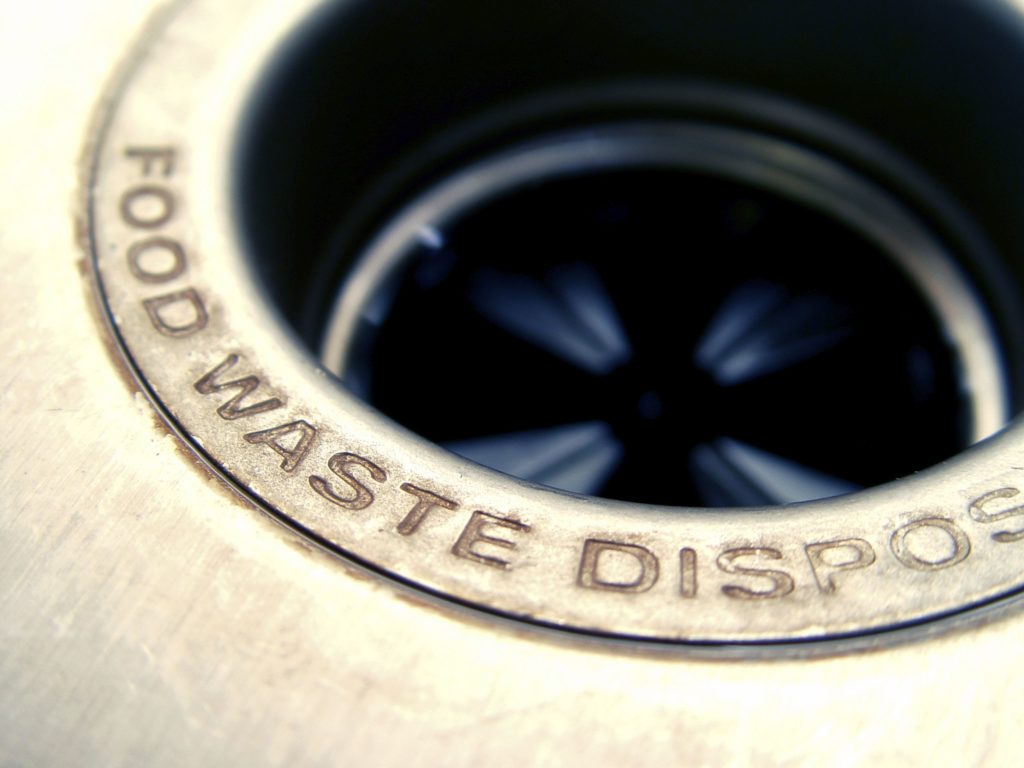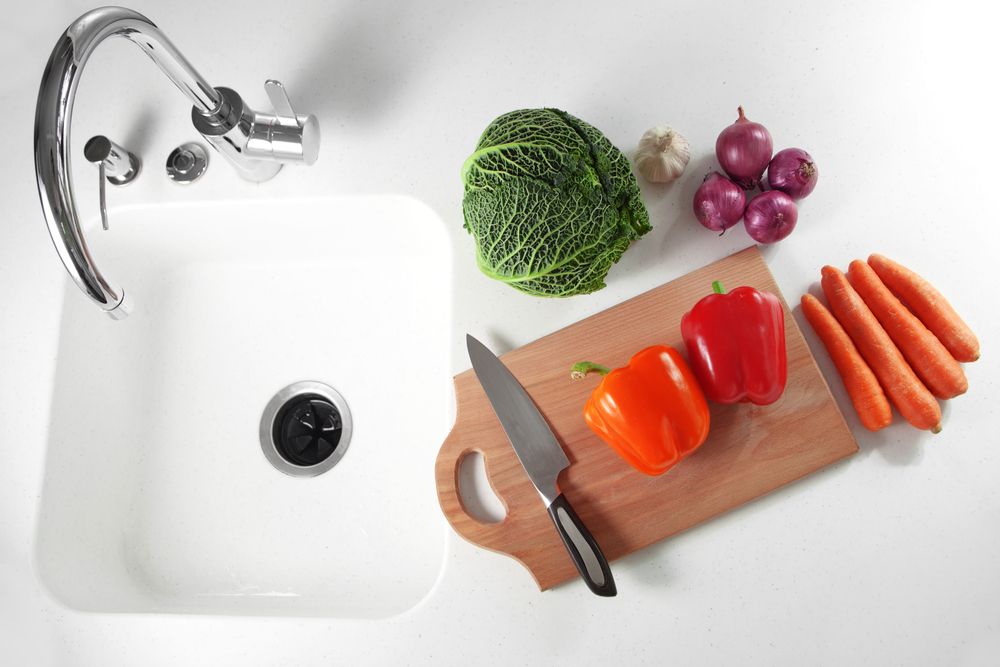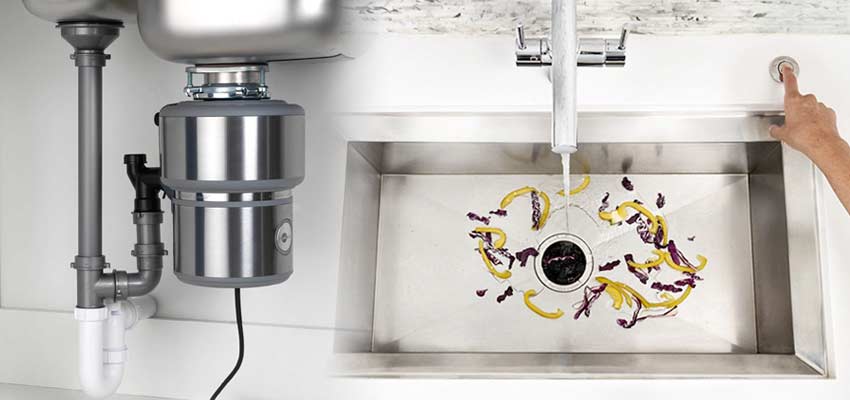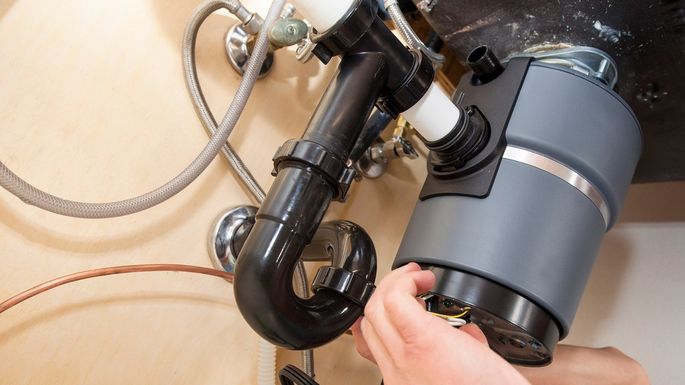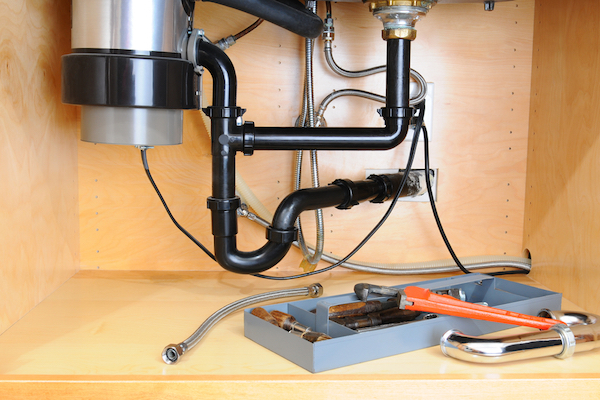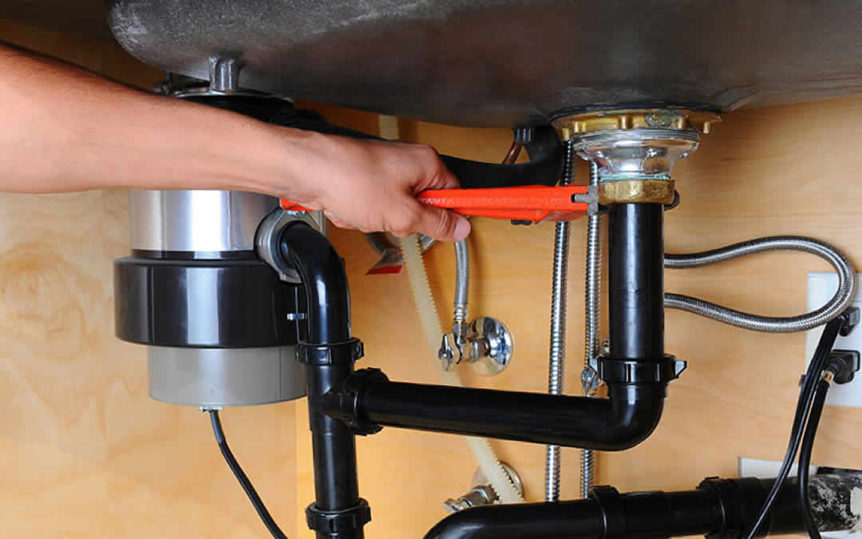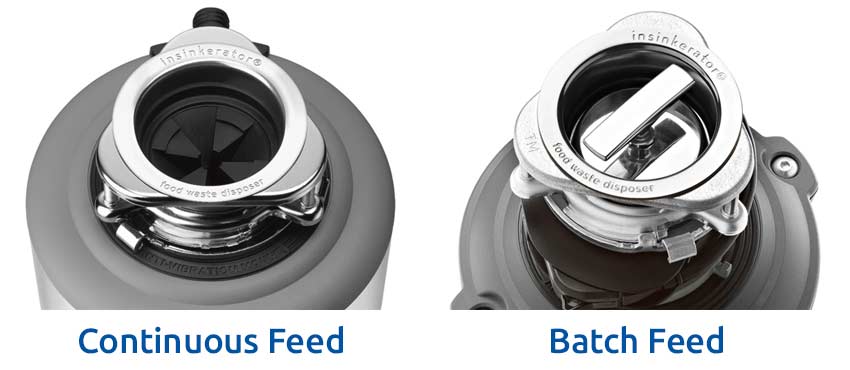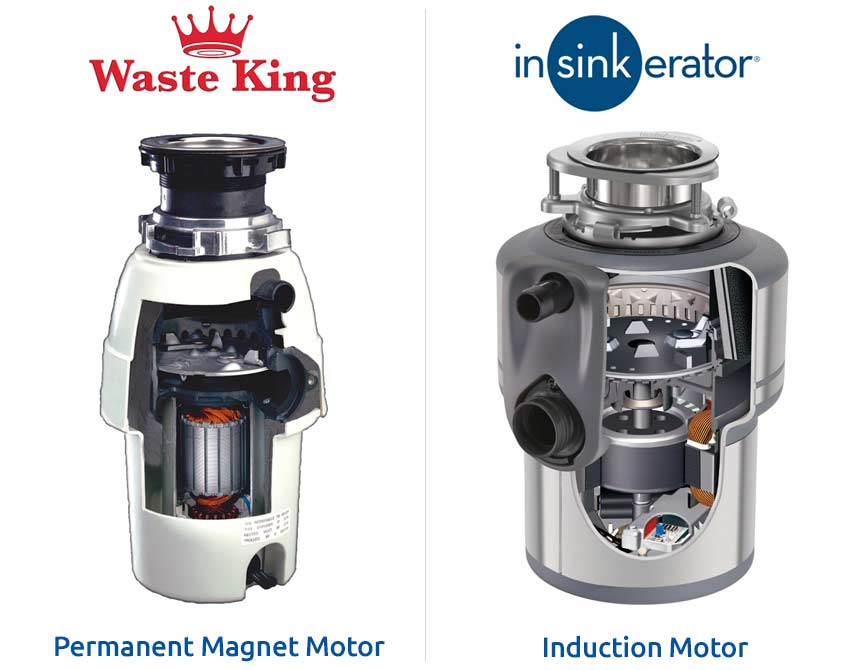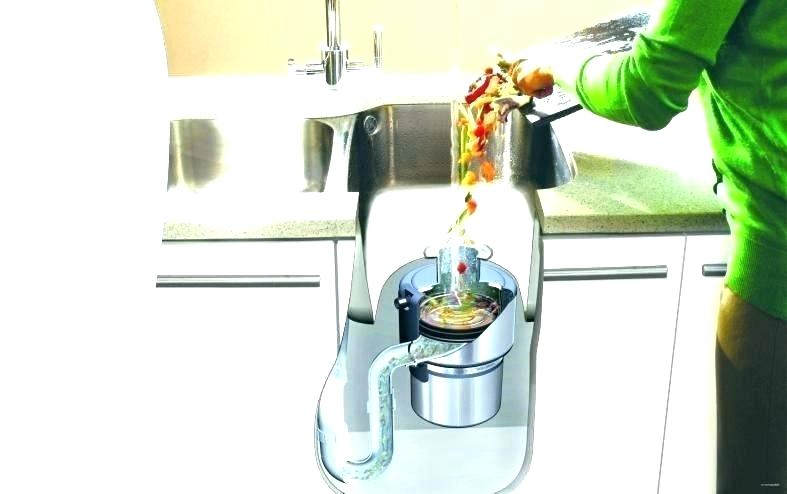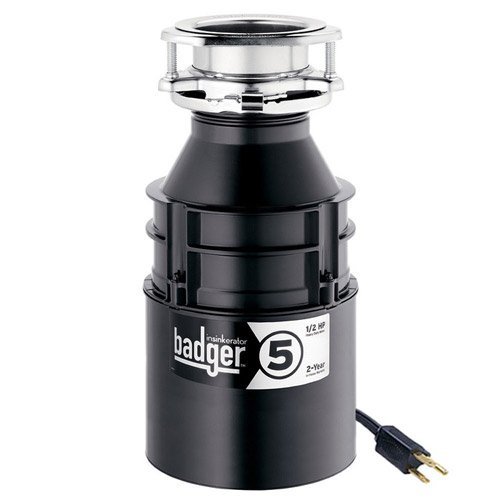Everything You Need To Know About Garbage Disposals & Which To Buy (Updated 2020)
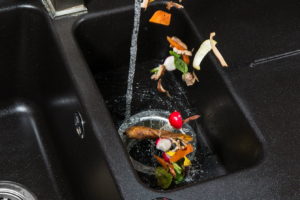
Having a garbage disposal in your kitchen can be a godsend when cooking and cleaning. Just like all the other appliances in your home, the garbage disposal has certain elements that you need to be aware of to maintain proper operation and lifespan. In the following article we will discuss garbage disposals & which to buy.
What Are Garbage Disposals?
A garbage disposal, also referred to as a waste disposal unit, garbage disposer, food disposal, etc, serves an electric food shredder that breaks down food so that it can effectively pass through your homes plumbing.
The main benefit of a garbage disposal is to make it easy to get rid of food scraps either when cleaning off dishes, pots, and pans, or whilst cooking a delicious dinner for the family. Think, pepper cores, carrot tops, etc.
Invented in 1927 by an architect in Wisconsin named John W. Hammes. Fun fact: It took 13 years after his invention for the first garbage disposal to hit the market under the InSinkErator company.
How Does a Garbage Disposal Work?
A popular questions we get asked is “how does a garbage disposal work?”. This is actually a great question because most people think a garbage disposal operates just like a blender, with sharp spinning blades that slice up the food waste.
In reality this couldn’t be further then the truth. A garbage disposal works in a different manner as there are no blades present. Instead of blades, impellers, also referred to as lugs, which are mounted on a spinning plate are used to continuously force food particles against a stationary grind ring through the use of centrifugal force.
This grinding process is what breaks down the food into extremely fine particles that are able to pass through the plumbing without causing any backups.
What Foods Should Never Go Into a Garbage Disposal?
Contrary to popular belief, not all foods are recommended to meet the spinning fate of a garbage disposal. Yes, the garbage disposal does an excellent job at disposing of 99% of foods however there are some that you should refrain from tossing down into one.
Those foods are:
- Bones – Bones are too dense to be properly broken up by the disposal.
- Celery – Celery is very fibrous and these fibers tangle around the disposals components.
- Pumpkin – Pumpkin is very fibrous and these fibers tangle around the disposals components.
- Corn Husks – Corn Husks are very fibrous and can around the disposals components.
- Coffee grounds – Coffee grinds are heavy and cause sediment build up in the drain.
- Egg shells – The egg’s membrane can cause issues with the disposal, not the shells themselves.
- Fruit Pits – Fruit pits are too dense and cause too much stress on the disposal components.
- Grease – Grease & oil should never be poured down a drain but instead collected in a can or jar.
- Pasta – Pasta swells when wet and can cause clogs in the pipes if tossed down a disposal.
- Potato Peels – Potatoes contain starch and that starch is bad for your disposal and pipes.
- Oatmeal – Like pasta, uncooked oats will also expand potentially causing clogs in the pipes.
- Nuts – Nuts & water make a paste similar to peanut butter. Limit nuts in the disposal.
- Onion Skins – The onion’s membrane can cause clogs after slipping past the disposal.
What Foods Are OK for a Garbage Disposal?
Technically, all foods that have not been listed above will generally be OK to be disposed of. Some of the questionable items that are OK to dispose of are:
- Cooked meat scraps – Cooked meat, while dense is perfectly grind-able by a garbage disposal.
- Citrus Rinds – The peel of oranges, lemons, limes are all fine to be disposed of and can add a pleasant smell to the kitchen.
- Fruit Scraps – All fruit is OK to be disposed of, just don’t forget to save the pits for the trash.
- Vegetable Scraps – Most vegetables are OK and we have discussed which ones to avoid above.
How Long Does a Garbage Disposal Last?
On average a good quality garbage disposal should last you between 8 and 15 years. Many factors play a part in the lifespan such as the frequency of use, types of food scraps used, and the brand of disposal you installed. Between those 8 to 15 years the risk of the lugs wearing out or the motor burning out increases and happens to be the cause of failure for 99% of garbage disposal units.
When to Replace Your Garbage Disposal?
Knowing when to replace your garbage disposal will save you the headache of it completely failing on you, having the worn lobes causing clogged pipes, or having it rupture and cause water damage to your sink or cabinet.
- Failure to power on- The most obvious sign that signals when to replace your disposal is when your garbage disposal fails to turn on. If the wising is intact and the kitchen fuse hasn’t been tripped then it is time for a replacement unit.
- Water Leaks – If you notice water leaks on the floor of your cabinet and can rule out the pipes themselves it may be time to replace your disposal. The seals inside, while durable, simply do not last forever.
- Strange Noises – A garbage disposal has many moving parts to it. It is recommended to always operate a garbage disposal with cold running water however running a disposal dry for even a second will cause wear on the parts as they heat up. Over time, this can cause the metal parts to prematurely wear as they rub against each other. If your disposal makes any remarkable metallic sounds then it is recommended to replace the unit before total failure occurs.
- Frequently Resetting – If you find that you are frequently having to press the reset button on your disposal in-order to use it then it is time to replace the unit. The reset button should only be used very sparingly and in rare instances. If you are going through this, failure of the unit is not long away.
- Lingering Odors – Old food scraps are prone to giving off bad odors as they decompose. Over the years, food particles can become trapped or logged in the disposal making the unit give off an unpleasant smell. If you tried cleaning the unit, more on how to do that below, and the odors are still present then hiring a professional may be the best option. However, if the unit is nearing the end of its lifespan (8-15 years) it is recommended to simply replace with the new unit as the cost to hire someone to clean an older unit will most likely not be justified.
How To Clean a Garbage Disposal?
Periodically cleaning your garbage disposal can be very beneficial to increasing it’s lifespan as well as reducing any odors from trapped food particles that didn’t quite make it down the drain.
Fortunately, cleaning a garbage disposal is very simple and only requires a few steps. There are a few different cleaning methods available depending on the desired level of clean and we will cover those below:
Before cleaning make sure there is no blockage in the disposal its self. If so, carefully remove before proceeding to clean.
- The first cleaning method is to simply cap the drain and fill the sink with hot water with a few drops of dish soap mixed in. Once the sink has adequate water simply remove the cap and turn the disposal on and leave it on for a solid 10 seconds after the water has drained. Important note: Leave the water running during the process. Remember never to run the disposal dry
- If your disposal still requires a deeper clean you can try disposing ice cubes and salt. During this method, the ice cubes help to sharpen the lobes while the salt helps to remove stuck on food slime due to its abrasiveness. Tip: If you freeze white vinegar into cubes and use them in place of normal ice they will help sharpen while also clean simultaneously.
- If your garbage disposal still emits an odor you can try tossing a few citrus peels into it. The citrus peels of an orange, lemon, lime, or grapefruit so an excellent job of cleaning the lobes and eliminating odors due to citrus being a natural cleaner.
- The last garbage disposal cleaning method is to use baking soda and vinegar. These substances, when mixed together, create a super cleaning solution that bubbles and expands reaching every crevice within your disposal loosening any stuck particles.
How to Unclog a Garbage Disposal?
Over the years, your garbage disposal might become clogged from either too much food or the wrong type of food, or both. Luckily, anyone can unclog a disposal in a few simple steps:
- Quick tip: How to reset garbage disposal? Make sure to press the reset button on the very bottom of the garbage disposal unit. It would be silly to waste time attempting to remove a clog that isn’t present. If the disposal start working after pressing the button, then congratulations, repair time is over!
- If resetting the disposal didn’t do the trick then its time to power off the unit and turn off the breaker that controls the disposal. Please double check this before attempting to remove any clogs with your hands, or tools. When it comes to dealing with fast metal grinders, it is better to be safe than sorry.
- Shine a flashlight down into the disposal and take note of any visible debris and remove if present. If debris was removed, flip the breaker on and test to see if removing it fixed the operation of the disposal.
- If no debris was present and the disposal still wont function properly you can use a plunger, yes that’s right, a plunger. Believe it or not but a plunger can work remarkably well at removing any stuck food particles.
- If the plunger failed to loosen the garbage disposal clog then the next step is to use some household chemicals. Poor ¼ cup of baking soda down the garbage disposal and follow it up with ½ of white vinegar and let sit for a good 5 to 10 minutes, when flush with hot sink water or even a pot of boiling water for maximum cleaning power.
If the steps above failed to work then it is time to call a professional plumber to assess and remedy the situation.
How to Fix a Garbage Disposal?
Learning how to fix a garbage disposal that hums or doesn’t turn on can be rewarding due to the time and money saved on hiring a plumber.
The first step is to always inspect the disposal for any debris and remove if necessary. Remember, turn the breaker switch OFF before sticking your hands or any tools down the disposal. If no debris is present in the disposal you can try pressing the reset button on the bottom of the unit its self.
If these two steps fail to fix the disposal then you can try to manually rotate the disposal using a broom handle. Remember, to do this with the breaker in the off position. If you are able to rotate the disposal it should work when powered on. If not, there is most likely a stuck object in the rotating assembly. Keep trying to move the assembly to loosen the object.
If all else fails, you may remove the disposal and inspect further, or simply call a plumber.
How to Replace a Garbage Disposal?
If and when the unfortunate time comes that your garbage disposal no longer works as intended, it is time to replace the unit. The task of replacing your garbage disposal can be done either by calling a plumber or, for the do-it-yourselfers out there, yourself!
If you choose to replace it yourself then don’t worry we will step your thorough the task.
Note: You will need a few tools & supplies to successfully complete a disposal removal and installation. Those are as follows:
- Screwdrivers
- Thread seal tape
- Plumbers putty
- Hacksaw
- Needle nose pliers
- Sink Flange
- You should start off by switching the breaker that controls the garbage disposal to the off position as to avoid any possible electric shocks or other mishaps when removing the disposal. Always test that your turned off the correct breaker by attempting to power on the disposal from the switch near the sink.
- With the power to the disposal off you may now locate the disposal under your sink and get in position to remove a few things. The first piece you want to disconnect is the discharge tube. This tube is attached to the side of the disposal and runs into the ground plumbing. Simply remove the screws and pull the tube away from the unit to remove. Note: Some units can be connected tot he dishwasher water supply. If this is the case, simply remove in the same manner as the discharge tube.
- With all external tubes removed it is now safe to remove the disposal unit. To remove, grab the unit with both hands and twist clockwise. The unit will spin a couple of inches and be released from it’s mounting bracket. Note: Remove with caution as garbage disposals can weigh anywhere from 10-15lbs.
- Next, flip over the garbage disposal in order to locate and unscrew the face-plate. This will expose the power wires which then need to be separate by twisting the plastic caps.
- With the disposal removed and the wires disconnected it is a good idea to replace the mounting ring if necessary. A worn out mounting ring will cause loud vibrations when the disposal is being operated.
- The next step is to remove the sink flange and replace the new flange for the newer unit. To remove, use a screwdriver to loosen the large nut holding the flange to the underside of the sink.
- You may now remove the flange by lifting straight up and out of the sink. Remember to carefully remove any left over plumbers putty. Failing to do so may cause improper sealing of the new flange.
- With the old disposal unit, flange, and putty removed it is time to reverse the process and install the new components.
- Start of by applying a bead of plumbers putty around the flange and press down into the sink drain hole. Then, on the underside of the sink, insert the flanges followed by the mounting ring and finally the snap ring which holds the mounting ring and flanges together. Remember to then tighten the screws on the flange.
- Before installing the new disposal unit you need to connect the power wires using the wire nuts as well as the ground wire by using a screwdriver.
- The final task before twisting the disposal into it’s new home is to connect the discharge tube(s) to the unit. With the tubes connected you may now twist the disposal into the mounting bracket and use a screwdriver to tighten the locking ring.
- Note: If your new unit is larger then the one your replacing you may need to trim the length of the discharge tube using a hacksaw.
- Once the discharge tubes have been connected is it time to test for any leaks before calling it a job well done. To test the unit, turn the breaker back to the on position, run water into the unit, turn the unit on and inspect underneath for any leaks. If no leaks are present then congratulations, you have just successfully removed and installed your new garbage disposal.
How to Choose a Garbage Disposal?
Believe it or not but they are many different types of garbage disposals available on the market to meet different needs. If you are on a budget you may not want to purchase the most expensive disposal on the market if you don’t need the extra power. We will discuss the main differences between disposals below so that you may make the smartest buying decision.
Which Feed Type Do I Need?
Garbage disposals come in two types: Batch feed & continuous feed. Continuous feeds are the most common disposal type and operate by the use of a wall switch. Batch feed disposals are less common but do have their ideal use cases.
Batch feed disposals require a stopper lid to be placed on the sink flange in order to activate the disposal.Batch feed disposals are normally more expensive because of this feature however these disposals eliminate the risk of unwanted objects, such as forks, sponges, etc, from falling into the disposal while its being operated.
What Motor Size Is Strong Enough?
Garbage disposal motor sizes range form 1/3rd of a horsepower to a full 1 horsepower in strength and everything in between. For most households, a ½ HP motor will provide plenty of power for normal use however if you consider your use to be above average there is no harm in opting for a model with a stronger motor.
A stronger motor will jam less frequently under heavy disposals sessions and generally last longer due to the reduced stress on its components throughout its lifespan. If you cook many nights out of the week and/or have a large family with piles of dirty dishes, then a stronger disposal is for you.
Differences in Grinding Chamber Material?
The grinding chamber of a garbage disposal is where the food is ground down into fine particles and there are two different types of grinding chambers, standard steel and stainless steel.
The larger models offer the stainless steel model due to the increased cost, weight savings and benefit of the stainless steel chambers being easier to clean. However, it has been reported that stainless steel chambers are more prone to damage by hard objects such as bones, and the occasional fork or knife that falls into the unit while running. This is due to the fact that stainless steel is a thinner metal than normal steel hence the weaker characteristics.
Auto-Reverse is normally included on the high end garbage disposals and for good reason. Auto reverse is an extremely helpful feature that, upon detection of a jam, will automatically reverse the grinding chamber then attempt to continue grinding in an attempt to remedy the jam. This feature can save you tremendous time and effort should a jam occur compare to a disposal without auto reverse.
How Noisy Will It Be?
The number one question and concern about garbage disposals is how noisy they will be when under operation. A general rule of thumb is that the more expensive the garbage disposal is, the quieter is will be under operation. More expensive units have additional insulation around the grinding chambers compared to the cheaper models which quiet the the overall sound from operation.
The Top Rated & Most Loved Garbage Disposals
We have done the researching for you when it comes to picking the ideal garbage disposals & which to buy for your use case and budget. Below are the top rated garbage disposals on the market from both the Home Depot, Lowe’s, and Amazon with links to purchase directly from Amazon. Our recommendations are based on a fey key factors such as review rating, number of reviews and price.
The #1 Overall Disposal
Insinkerator Evolution Compact ¾ HP Continuous Feed
This beloved garbage disposal by Insinkerator and offers very quiet operation and boasts a strong ¾ HP motor which will easily meet the needs of 99% of households. This disposal is backed by over 3100 reviews and has managed to achieve a 4.5 star rating on the top review websites.
If you are in the market for a quality garbage disposal, the Insinkerator evolution ¾ HP may very well be the last one you will ever need to purchase. This disposal is more affordable then it’s more expensive and less liked competitors.
The #1 Powerhouse Disposal
The Excel is the big brother to the beloved Evolution 3/4 HP model as mentioned above with the exception of a super powerful full 1 HP motor.
If you consider your cooking and family dishes on the extreme side or just crave the thought of knowing your garbage disposal can handle disposing of a small vehicle (kidding) then you have just found the best option for your disposal needs.
The #1 Budget Disposal
If you are on a budget and simply won’t be using your disposal every single day or for large quantities of food scraps then we have you covered with the best budget garbage disposal. The Insinkerator Badger 5 ½ HP Continuous Feed will do an outstanding job for your minimal to moderate garbage disposal needs as it’s made of the same high quality parts as its bigger brothers who are mentioned above.
The Badger 5 is backed by over 930 reviews and boasts a review score of 4.5 stars. This is the best option if you don’t require heavy & frequent disposal operation.
To finish up this piece of content we will leave you with a few interesting facts regarding garbage disposals.
- A staggering 30-40% of our countries food supply is thrown away in the trash every year and that food ends up in the landfills. The use of a garbage disposal reduces the amount of space that is taken up by food waste in landfills.
- Food waste in the trash can attract animals and pests. By disposing of food via the disposal you reduce the smell of your trash and as a result, reduce the risk of animals or pests invading it.
- Almost 50% of the country is currently without a garbage disposal.
- Black Friday is the busiest day of the year for plumbers as it follows thanksgiving and the sink clogs that come with it due to a lack of garbage disposals.
We hope this article helped you lean about garbage disposals & which to buy. If you are in the market for a new garbage disposal, need help installing one, or are interested in learning how to fix one, then we hope this piece of content has helped you in more ways then one. If you enjoyed please consider sharing with any friends, family or colleges who you feel would also benefit. If you are in south Florida and are in need of a competent plumber who cares then please contact the #1 plumber in delray beach, Your 1 Plumber FL at 561-403-1500

